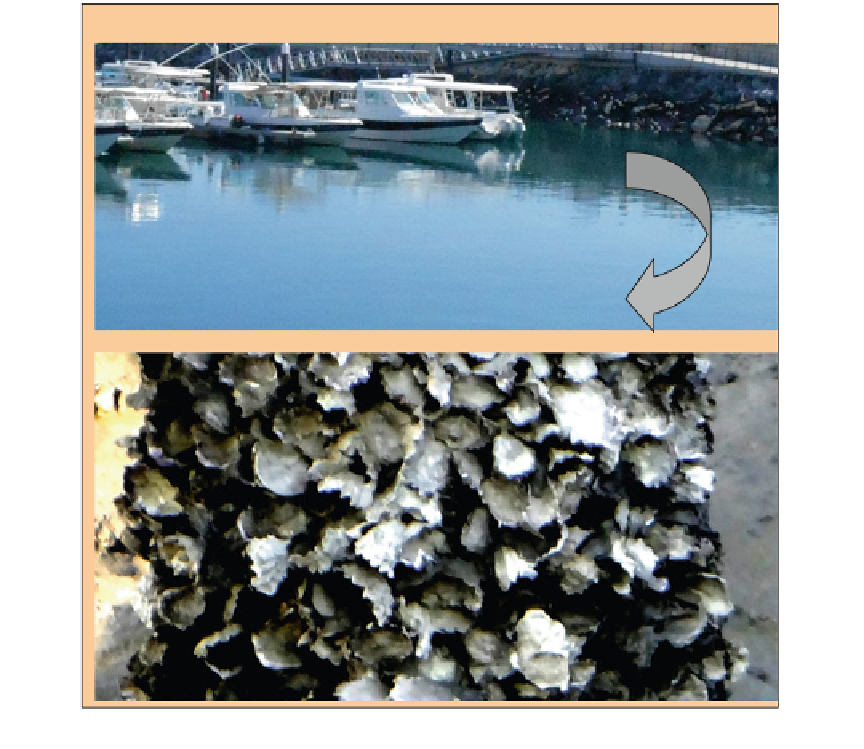Environmental Engineering Reference
In-Depth Information
ATMOSPHERE
CO
2
CO
2
+ CO
3
+ H
2
O 2H
2
O
CO
2
+ H
2
O
2HCO
3
Ca
CaCO
3
+ CO
2
+ H
2
O Ca + 2HCO
3
CaCO
3
Fig. 6.5
Oyster
'
s role in oceanic carbon cycle
the pH of the water in which they live (Knutzen
1981
). But how severe would the pH changes be
from carbon dioxide sequestration, and what
would be the impact on molluscan community,
whose calcareous shell is prone to dissolution at
a lower pH? The dissolved inorganic carbon
(DIC) concentration in surface ocean waters is
already higher than in pre-industrial times as a
result of the elevated carbon dioxide concentra-
tion in the atmosphere. Calculations show (Ha-
ugan and Drange
1996
) that there has been a
decrease in pH of the ocean surface water of
almost 0.1 pH units due to the increase in
atmospheric carbon dioxide from pre-industrial
times. The
see much lower seasonal variations.
Indeed,
below the euphotic zone (the top 100
200 m,
where there is enough light to support photo-
synthesis), the seasonal variation in pH is uni-
versally very small. The same calculations show
that the current rate of increase in atmospheric
carbon dioxide concentration (15 ppm/decade)
will cause a decrease in pH of 0.015 units/dec-
ade. This, by itself, could have a signi
-
cant
impact on the ecology of the productive surface
waters of the oceans in the foreseeable future.
The present authors conducted a study on the
aquatic pH value in three sectors of Indian Sun-
darbans during 1990
2012. The sampling sta-
tions are shown in the Fig.
6.6
.
It was observed that the aquatic pH decreased
by 0.11, 0.10 and 0.06 unit in the western, central
and eastern Indian Sundarbans,
-
in the North Atlantic
and winter upwelling of deep (CO
2
-rich) water in
the North Paci
'
spring bloom
'
c can cause changes in surface
water pH of this magnitude, but other ocean areas
respectively






















